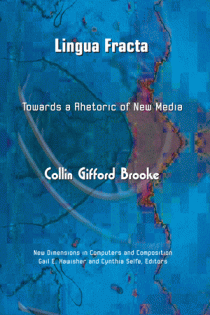So I’ve been playing a game lately when I’m driving long distances alone:
- Before leaving, fill mp3 player with only the tracks I’ve given 4 or 5 stars in Winamp. (Yes, Winamp.)
- In the car, listen to everything on shuffle.
- Pretend I’m listening to a carefully curated 10-song mixtape, 5 songs on each imaginary side, listening for subtle connections between tracks and an interesting difference between Sides A & B.
- Drop my jaw in amazement at the subtle connections that surface, on their own, born of the crafty agency of the machinery.
This isn’t totally my idea; Rob Sheffield’s Love is a Mix Tape gave me the idea long ago (“I can load up my iPod with weeks’ worth of music and set it on shuffle to play a different mix every time”), but I bet thousands of people have played the game, pretending there was a an author behind an authorless shuffle.
It’s an attractive idea in part because it’s the opposite of my recent obsession with the different ways we can create meaning by purposefully curating tracks. This takes the curator out of the mix.
But that’s not what I’m here to think about. I’m really here because of Step 5 of the game:
5. Imagine that the 11th track in the random mix is a bonus track on the mixtape, explicitly labeled as such by the imaginary tape-maker.
While playing the game, this somehow never fails to work. The 11th track somehow feels, well, bonus-y. There’s something quirky or unusual or off-putting about it that seems to say, “Dude, you had to hear this, but it just didn’t fit with the rest of the tape. You understand why, right?”
Well, yes. I understand. But do I?
*
A moment of clarification: I’m not sure what the difference is between a bonus track and a hidden track in my mind. (If I already knew what I wanted to say, why would I write about it?)
I know my first hidden track: that lovely, meandering instrumental groove at the end of Pearl Jam’s Ten.
I might be remembering this wrong, but I don’t think this was included on the cassette release. And my first copy of Ten was dubbed from a friend’s tape, so I didn’t hear this extended hidden track until I bought the CD from a friend’s older brother a few years later.
Then there was “I’m going crazy” stuff at the end of the Smashing Pumpkins’ Gish:
Eventually, looking for a hidden track was one of the first things I would do when getting a new CD in middle school and high school: I’d listen to the first 10 seconds or so of every track and then check the length of the final track, looking for signs that something was hidden in there, like a digital cavern, its walls darkly painted with ones and zeros that no one else knew about.
And there’s something in a hidden track that’s akin to what I’m thinking about here. The Pearl Jam example seems to say, “We had this sweet sound we played around with in the studio, but we didn’t quite know how to get it to you except on some B-side that no one would hear, so we put it at the end of the album instead.” And the Smashing Pumpkins example says, “Hey, we don’t always take ourselves so seriously. You know that, right? I mean, this is a serious album, as you can tell, but here at the end we want you to put your feet up for a spell.”
So what if both of these tracks had been numbered, included on the list of official tracks, but explicitly called “bonus tracks”? It would afford the tracks a visibility, a legitimacy that the bands want them to dodge when they hide them, either because it’s not their best work or because it’s more fun to hide.
Either way, hiding it or bonus-ing it, it’s a rhetorical move. That is to say that it’s a decision made by a composer who wants its explicit placement in that way to communicate something, to be given a sort of metadata about how it’s to be heard, understood, considered.
Which is to say that it’s a move I can make when I’m composing in some other medium, too.
Which is to say that it’s fun.
*
When I search for the word bonus in Spotify and sort the results by popularity, I see bonus tracks from Mumford & Sons, Justin Bieber, Kendrick Lamar & Dr. Dre, Skrillex, Mac Miller, City and Colour, Flo Rida, SOJA, Blake Shelton, Christina Perri feat. Jason Mraz, and of course, tons more.
I’m not familiar with a lot of those artists, but I can’t help but wonder: if you know some of those artists’ albums and I mention bonus tracks, does the bonus track come immediately to mind? Is it part of your experience of the album? Is it marked as unalterably bonus-y in your mind?
And is it different if you listen to the album on CD, mp3, vinyl, tape, whatever?
*
As I write this, I’m listening for the second time to Balance and Ruin, a four-disc album of music from the OverClocked ReMix community inspired by Final Fantasy VI, the Super Nintendo game that kept everyone my age from wanting to do any extra-curricular activities at all because it was that stinking good, and because its music melted our ears with awesomeness.
Wait, did I say four-disc? I mean five-disc. Even though the official cover art for this remix album only lists four discs, walking listeners through sweet new versions of the tracks from the original game with no repeats, there’s a fifth disc that feels very bonus-y to me. It offers arrangements of some tracks that were already featured in discs one to four, and it starts with a hard-to-describe, four-movement, forty-minute, guitar-shredding odyssey through only two tracks from the game. So it’s different. But it’s included. It’s a bonus.
In a Reddit discussion, album director Andrew “Zircon” Aversa defends the music on disc five as important, integral, and hella-good:
To be clear, the tracks on disc 5 definitely made our cut. We had multiple takes for a variety of reasons. In some cases, someone started a remix and said they couldn’t finish, so we found another musician to fill their spot. Then, the original arranger finished their track after all. We also ran two contests which produced tons of great material, in some cases multiple takes on the same tune. In any case, anything on ANY disc of the album is absolutely stamped with our seal of quality. Deciding which take to put on which disc was just a matter of subjective preference for which version fit the main track flow the best.
Aversa is onto something here in my thinking about bonus vs. hidden here. A hidden track might not be said by a band/musician/album director to be “absolutely stamped with our seal of quality.” (Five Iron Frenzy’s hidden track “Kingdom of the Dinosaurs” even includes apologies to people still listening to the weird sounds they’re making.)
But a bonus can still be good. Really good. It just feels different.
But what I can’t get over is this: does it feel different because I was told to think it was different? Is it the label, the context that makes it feel bonus-y? Or is it inherent in the music itself? After all, any track that comes up as track 11 during my imaginary mixtape game could come up as track 1 on my next drive. But when it’s track 11, I convince myself that it’s different.
And if I played you a disc-5 rearrangement of Terra’s Theme from the FFVI rearrangement album, would you know it from the disc-2 version? Could you tell that it was a bonus?
*
Lucky me: there’s a Wikipedia page called “Bonus track.” (It’s headed by a warning from August 2007 that it doesn’t cite any sources, and it still doesn’t. By now, is that warning kind of like a textual bonus track to be experienced separately from the main article?)
It’s an interesting stub, with some points about the relationship of bonus tracks to major labels’ distribution deals with Japan and some thoughts on the relationship of purchasing habits on iTunes to the bonus track. But my favorite part is this paragraph:
A song by MC Lars featuring Ashley Jade entitled “The Bonus Track for Japan” pokes fun at the Japan-specific instance of this phenomenon, with Lars singing a series of facts about Japan. It was actually used as the “Japanese bonus track” for Lars’ album The Graduate. It has, more recently, been remixed and put on the MC Lars album 21 Concepts (But a Hit Ain’t One).
It’s the last sentence that intrigues me the most: a remix of a bonus seems to give a new legitimacy to the bonus track that it couldn’t originally have had. (Imagine a remix of the Pearl Jam or Pumpkins tracks above. Doesn’t feel worth it.)
The talk page extends the conversation in two more delicious ways:
- A list of 163 albums with bonus tracks was deleted from the page but copied onto the talk page because “Unwieldy, useless lists do not aid understanding.”
- A few clever folks are discussing the possibility of adding some points about the history of the bonus track, but they don’t have any references, just their own memories. (“So the first bonnus track is a real mystery. But it would be good to find out.”)
- Corollary: This suggests that memory itself is a bonus track to our lived experiences.
*
That talk page also includes this line, under the heading “mistaken identity”:
i have this twin thet i have never met befor and i whant to kowe who she or he is if i can find them she has been wandiring if —Preceding unsigned comment added by 208.181.90.67 (talk) 21:45, 9 February 2008 (UTC)
It’s not part of the topic of the page or related to any other conversation on the talk page. It’s just a bonus.
*
Image: Personal remix of linda yvonne, “Once upon a time…..” and Nils Geylen, “365-164 MAR 31”








